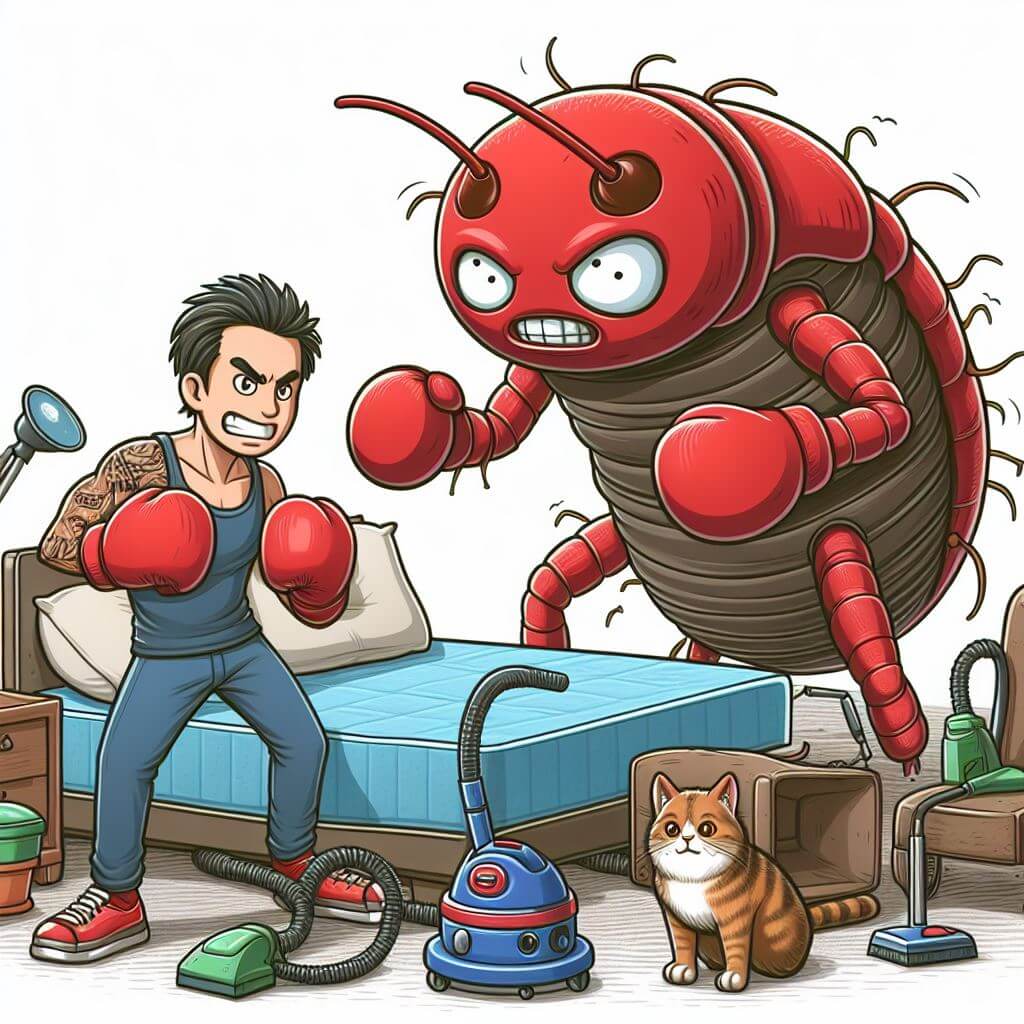The Bed Bug Menace: A Global Nightmare
The bed bug problem has become a worldwide epidemic, infiltrating homes, hotels, and even public transport. These tiny bloodsuckers have managed to unleash havoc on unsuspecting victims, leaving them with itchy welts and sleepless nights. From the bustling streets of New York City to the serene suburbs of Tokyo, bed bugs have made their presence known.
Take Control of Your Home: Don’t let bed bugs take over. Explore our article on vanquishing the bloodsuckers to discover effective extermination methods and regain a pest-free environment.
The Importance of Effective Extermination Methods
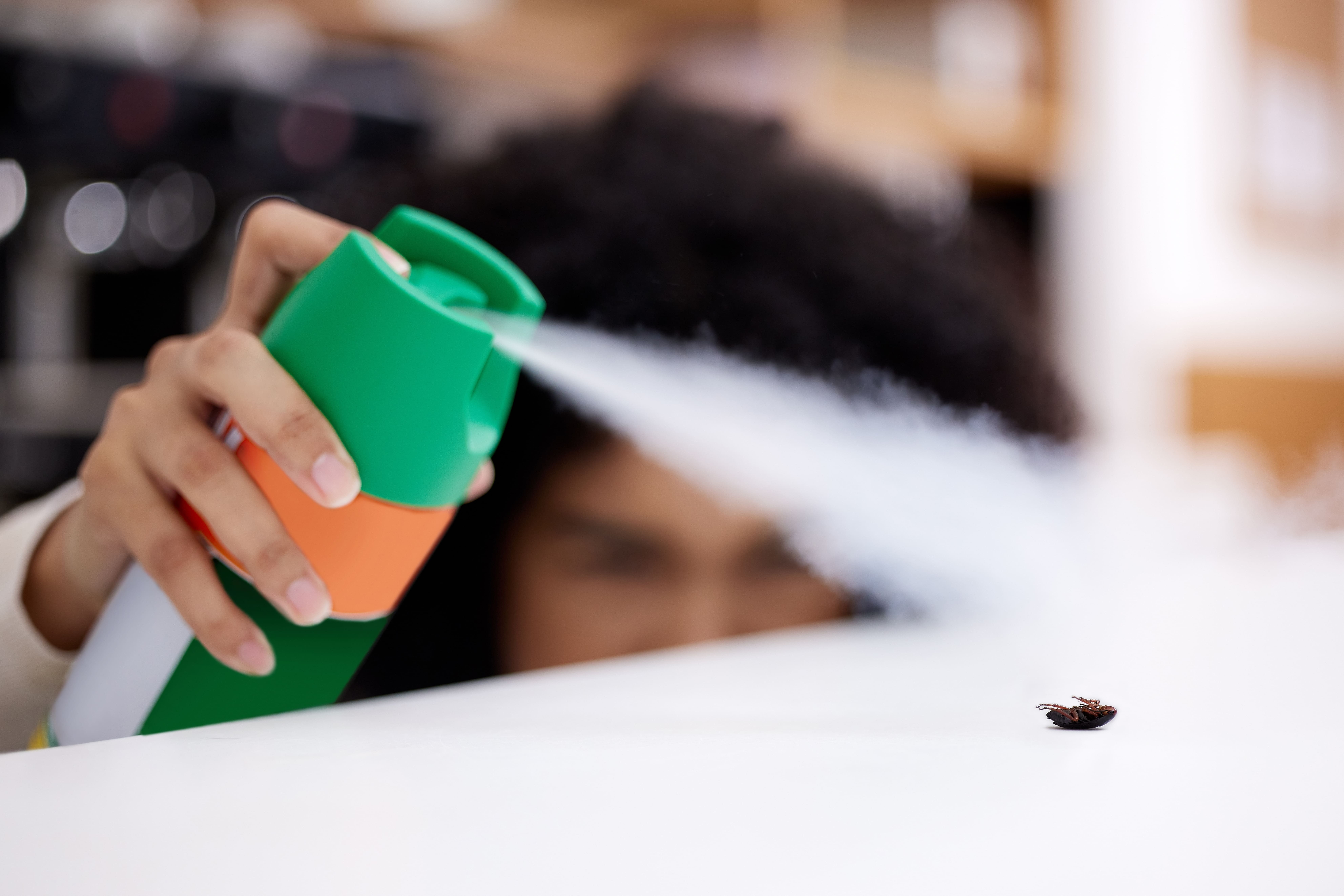
Finding effective extermination methods for these persistent pests is crucial. Bed bugs are not merely nuisances that disturb our sleep; they can also impact our physical and mental well-being.
The relentless itching caused by their bites can lead to secondary infections and a decline in overall quality of life. Furthermore, the stigma associated with bed bug infestations can cause emotional distress and social isolation.
To combat this growing problem, it is imperative to explore various extermination strategies that offer hope for those plagued by these resilient creatures. While professional bed bug control services exist, they often come with a hefty price tag and may not be accessible to everyone.
This has led many individuals to seek alternative solutions in the form of do-it-yourself (DIY) extermination methods. However, before embarking on a DIY crusade against these dastardly critters, it is essential to understand both the challenges involved and the potential effectiveness of such methods.
While some DIY approaches show promise in eradicating bed bugs from your home or belongings, others may fall short and prolong your battle against these persistent pests. This comprehensive article will delve into various DIY bed bug extermination methods you can employ yourself.
We will evaluate their efficacy based on scientific evidence and expert opinions while providing practical tips on how to implement each method effectively. Whether you’re dealing with a minor infestation or looking for preventive measures, this guide will equip you with the knowledge to tackle bed bugs head-on.
So, roll up your sleeves, grab a cup of coffee (or tea if you prefer), and journey with us as we explore the world of DIY bed bug extermination methods. Together, we will uncover the truth about these pesky invaders and arm ourselves with the tools necessary to win this battle once and for all.
Understanding Bed Bugs
Description and Behavior of Bed Bugs
Measuring only about 5-7 millimeters in length, bed bugs are masters of hiding in the smallest crevices and cracks within our homes. Their flat bodies allow them to squeeze into tight spaces such as seams of mattresses or behind peeling wallpaper.
A Nightmarish Buffet

Like vampires of lore, bed bugs require a regular blood meal to survive and reproduce. While they don’t discriminate between hosts, preferring human blood, they will also feed on other warm-blooded animals if necessary.
Bed bugs have a straw-like mouthpart called a proboscis that they use to pierce the skin and extract their nourishing meal. Fascinatingly grotesque as it may seem, these pests can feed for up to ten minutes at a time without detection due to the natural anesthetic properties present in their saliva.
Signs of a Bed Bug Infestation
Detecting these elusive creatures can be challenging since they are highly skilled at remaining undetected until their numbers become overwhelming. However, several telltale signs can indicate the presence of bed bugs in your surroundings:
1. Bites: Waking up with clusters of itchy red bites arranged in rows or zigzag patterns is one common indication that a bed bug bite or bugs may be feasting upon you during the night.
2. Stains: Dark stains or spots on your mattress or bedding could be fecal matter left behind by these unwelcome guests.
3. Shed Skin: As bed bugs grow, they molt their exoskeletons, leaving behind tiny translucent shells that can be found near their hiding spots.
4. Musty Odor: If you notice a distinct sweet and musty odor in your bedroom, it could be due to the scent glands of bed bugs secreting pheromones.
5. Visible Bugs: In severe infestations, you may spot actual immature bed bugs or bug adults crawling around or hiding in cracks on your furniture or walls.
Being aware of these signs can help you take swift action to combat the infestation and prevent it from spreading further. So now that we have a deep understanding of what makes these bloodsucking pests tick and how to identify their presence, let’s explore whether DIY extermination methods are effective in our quest to rid our homes of these unwanted guests.
DIY Extermination Methods: An Overview
Benefits and drawbacks of DIY approaches
When faced with a bed bug infestation, many people turn to DIY extermination methods as a cost-effective solution. One of the key benefits of these approaches is that they allow individuals to take immediate action without having to wait for pest control companies to schedule appointments.
DIY methods also empower homeowners by giving them a sense of control over the situation, enabling them to actively participate in the eradication process. However, it is important to acknowledge the drawbacks that come with DIY bed bug treatments.
Firstly, while some methods may work well for smaller infestations or isolated areas, they may not be as effective against larger or more widespread infestations. This is because bed bugs are notoriously resilient and can quickly spread throughout a room or even an entire home if not properly addressed.
Therefore, it’s crucial to assess the severity of the infestation before deciding on a DIY approach. Another aspect worth considering is that many DIY treatments tend to offer temporary relief rather than complete eradication.
Bed bugs have become resistant to certain pesticides commonly found in over-the-counter sprays, making it difficult for non-professionals to eliminate them or eradicate bed bugs. It’s essential to carefully evaluate which methods are most likely to yield effective results based on the specific situation.
Factors to consider before attempting DIY extermination
Before embarking on a DIY bed bug treatment journey, several factors need thorough consideration. Firstly, one must assess their level of expertise and knowledge regarding pest control techniques.
While some methods such as vacuuming or encasements might be relatively simple for anyone, others such as heat treatments or chemical applications require proper understanding and precautionary measures. Moreover, one needs to evaluate their tolerance for risk and patience during this process.
Bed bug elimination can be time-consuming and challenging; it often requires multiple treatments over a span of weeks or even months. DIY methods demand dedication and consistency to ensure the complete eradication of these resilient pests.
Additionally, it is essential to identify any constraints or limitations that might affect the efficacy of DIY treatments. For instance, individuals living in apartments or multi-unit buildings should consider the possibility of bed bugs migrating from neighboring units.
In such cases, cooperation with neighbors or seeking professional assistance may be necessary to prevent re-infestation. One should weigh the costs involved in DIY extermination versus hiring a pest control professional.
Although DIY methods are generally more affordable upfront, it is crucial to factor in the potential expenses associated with repeated treatments or additional measures required if initial attempts fail. While DIY bed bug extermination methods offer certain benefits such as immediacy and personal involvement, they also come with drawbacks that must be carefully considered.
Assessing the severity of the infestation and understanding the limitations of various treatment options are vital steps before embarking on a DIY journey. Ultimately, seeking professional help may be necessary in instances where infestations are severe or persistent despite initial attempts at eradication.
Heat Treatment: The Power of Temperature

Killing Bed Bugs with Heat: Unleashing the Ultimate Weapon
When it comes to eliminating bed bugs, heat treatment has proven to be a highly effective method that harnesses the power of temperature to eradicate these pesky pests. Heat treatment relies on the fact that bed bugs cannot survive extreme temperatures, making it an ideal solution for those looking for a DIY approach to tackle a bed bug infestation.
The principle behind heat treatment is simple yet effective. By exposing the infested area or items to high temperatures, typically around 120-140°F (49-60°C), it becomes impossible for any adult bed bugs, nymphs, or eggs to survive.
This method effectively eliminates all stages of the bed bug life cycle in one fell swoop. The recommended duration for heat treatment varies depending on factors such as the severity of the infestation and the size of the treated area.
Typically, maintaining this elevated temperature for several hours ensures that all bed bugs are eradicated completely. It’s crucial to maintain consistent high heat levels throughout the entire process since any fluctuations may allow these resilient pests to survive and reinfest your space.
While professional pest control companies often utilize specialized equipment for heat treatment, DIY enthusiasts can achieve similar results using tools such as portable heaters or steamers. However, caution should be exercised when attempting DIY heat treatments to avoid any accidental fires or damage.
DIY Heat Treatment Tips and Precautions
Before embarking on a DIY heat treatment journey, there are several essential tips and precautions worth considering: 1. Clearing Clutter: Remove any unnecessary items from the treated area as clutter can obstruct proper airflow and prevent uniform heating.
Placing them in sealed plastic bags can help prevent potential contamination in case they are infested with bed bugs. 2. Temperature Monitoring: Utilize a reliable thermometer to monitor and maintain the desired temperature throughout the entire treatment process.
Door frames, cracks, and crevices should be given extra attention, as bed bugs often seek refuge in these hiding spots. 3. Protective Gear: Always prioritize your safety by wearing appropriate protective gear such as gloves and long-sleeved clothing when handling heaters or steamers.
Additionally, ensure proper ventilation to avoid inhaling any harmful fumes that may be emitted during the process. 4. Furniture Treatment: Disassemble beds and other furniture whenever possible to expose all areas harboring bed bugs to the heat.
Mattresses can be opened along seams for better penetration of heat. 5. Follow Instructions: Read and follow the manufacturer’s instructions carefully when using any heating equipment to avoid accidents or ineffective treatment.
Heat treatment offers a powerful DIY option for homeowners battling bed bug infestations that can yield effective results when executed correctly. However, it’s important to remember that severe infestations may still require professional bed bug control assistance to ensure complete eradication.
Freezing: Cold as Ice against Bed Bugs
Exploring the concept of freezing bed bugs to kill them
When it comes to DIY bed bug removal, one intriguing method that has gained attention is freezing. The idea behind freezing bed bugs to eliminate them is based on the fact that extreme cold temperatures can effectively kill these resilient pests. Bed bugs, just like any other living organism, have temperature thresholds beyond which they cannot survive.
By subjecting them to subzero temperatures, we can exploit this vulnerability and eradicate these bothersome creatures. The concept of using extreme cold to kill bugs as a means of control isn’t entirely new; in fact, it has been used in pest management for other insects such as stored product pests or termites.
However, when it comes to bed bugs, the efficacy of freezing as a standalone method is still a topic of debate among experts. While freezing may be effective in killing adult bed bugs and their eggs under certain conditions, it may not always provide complete eradication due to the pests’ ability to withstand harsh environments for extended periods.
Proper techniques and equipment for freezing treatment
To successfully freeze bed bugs and combat an infestation using this method, there are several factors that need careful consideration. First and foremost, you should identify the items or areas you wish to first treat bed bugs. Items such as clothing, bedding materials, small electronic devices or toys can be sealed in plastic bags and placed in freezers set at 0°F (-18°C) or lower for at least four days.
For larger items like furniture or mattresses that cannot fit into a freezer compartment, specialized equipment such as portable vaporizers or carbon dioxide snow machines can be used. These devices release extremely low temperatures which can freeze and kill any bed bugs present within those items.
It’s important to note that while attempting DIY freezing treatment with household freezers might seem convenient, it may not always yield the desired results. The temperature and duration required for effective bed bug eradication might exceed the capabilities of regular freezers.
Therefore, it is advisable to consult with a professional pest control company or seek guidance from experts who specialize in the control of bed bugs and bug-freezing methods. In addition to proper techniques and equipment, it’s crucial to consider safety precautions when using extreme cold temperatures for DIY bed bug removal.
Always wear protective gear such as gloves and goggles when handling freezing equipment. When dealing with frozen items, allow them to gradually return to room temperature before unwrapping them to prevent any potential damage from sudden temperature changes.
While freezing can be an effective tool in the fight against bed bugs, it is important to note that this method should ideally be used in conjunction with other strategies for comprehensive control. By combining freezing treatments with thorough cleaning, vacuuming, and targeted use of insecticides or natural remedies like diatomaceous earth, you can increase your chances of successfully eliminating these persistent pests.
Remember, a multifaceted approach that includes both physical and chemical methods will provide the best results in tackling the bed bug problem. So don’t leave any stone unturned—freeze those critters into oblivion!
Vacuuming: Sucking Up the Problem
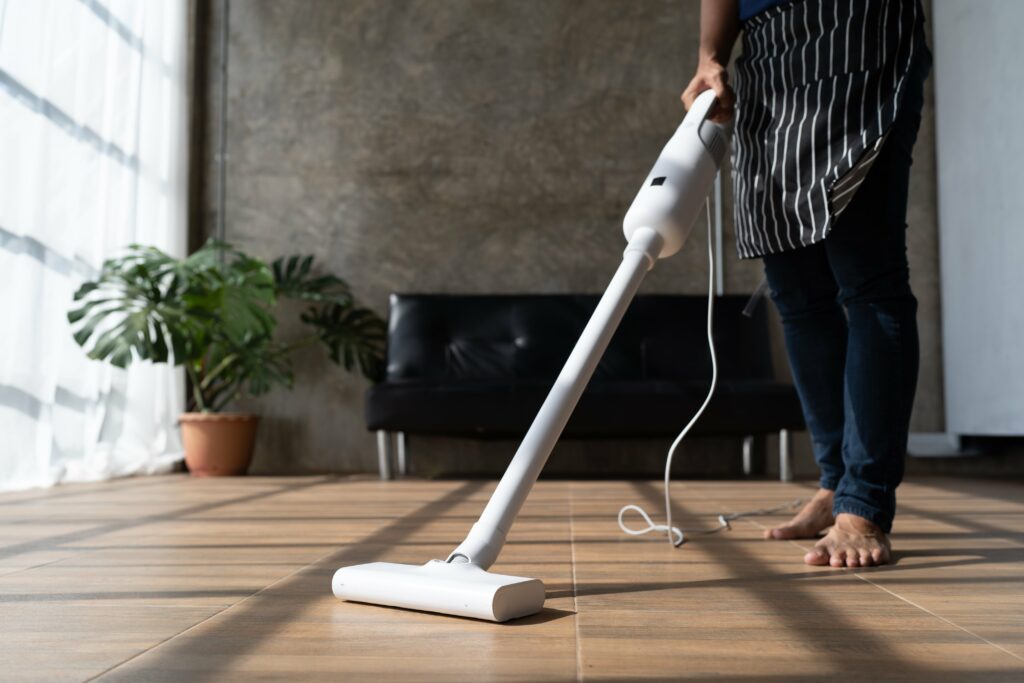
Using vacuum cleaners to remove bed bugs from surfaces
When it comes to battling those pesky bed bugs, using a vacuum cleaner can be an effective weapon in your arsenal. These tiny bloodsuckers love to hide in cracks and crevices, making it challenging to eliminate them. However, by incorporating regular vacuuming into your bed bug control routine, you can significantly reduce their numbers.
To effectively use a vacuum cleaner against bed bugs, start by equipping yourself with a model that has strong suction power and a HEPA filter. The powerful suction will ensure that the bed bugs are pulled into the vacuum and trapped within its confines.
Meanwhile, the HEPA filter will prevent any captured insects from escaping back into your home. When vacuuming for bed bugs, focus on areas where they tend to congregate or hide.
This includes your mattress seams, box springs, bed frame joints, and any other cracks or crevices in furniture or walls near your sleeping area. Remember to pay special attention to upholstered furniture like sofas or chairs where these sneaky critters love to lurk.
Tips for effective vacuuming in different areas
To maximize the effectiveness of your vacuuming efforts against bed bugs, here are some essential tips:
1. Thoroughly inspect before starting: Before you begin vacuuming any area suspected of harboring bed bugs, carefully inspect it first using a flashlight.
Look for signs such as live bugs, eggs, molted skins, or dark stains indicating their presence.
2. Use attachments: Attachments like crevice tools and upholstery brushes can help you reach deep into narrow gaps and effectively clean upholstered surfaces without damaging them.
3. Seal and dispose: After you find bed bugs during each round of vacuuming, immediately seal the vacuum bag or canister in a plastic bag and dispose of it outside in a tightly closed trash can. This prevents any captured bed bugs from escaping back into your home.
4. Empty and clean: Regularly empty and clean your vacuum to prevent any potential bed bugs from infesting the machine itself. Wipe down all surfaces with a disinfectant and dispose of debris properly.
5. Repeat regularly: Vacuuming should be performed regularly, at least once or twice a week, to disrupt the bed bug life cycle and reduce their population significantly over time. Remember that while vacuuming is effective in capturing adult bed bugs, it may not eliminate eggs or bed bug nymphs that are well-protected.
Therefore, it is crucial to combine vacuuming with other appropriate methods to increase your chances of complete eradication. Using a high-powered vacuum cleaner equipped with a HEPA filter can be an essential tool in your fight against bed bugs.
By incorporating regular vacuuming into your pest control routine and following these tips for effective use, you can significantly reduce the number of these unwanted guests in your home. Stay persistent, stay thorough, and keep those pesky critters on their toes!
Steam Treatment: Harnessing the Power of Steam
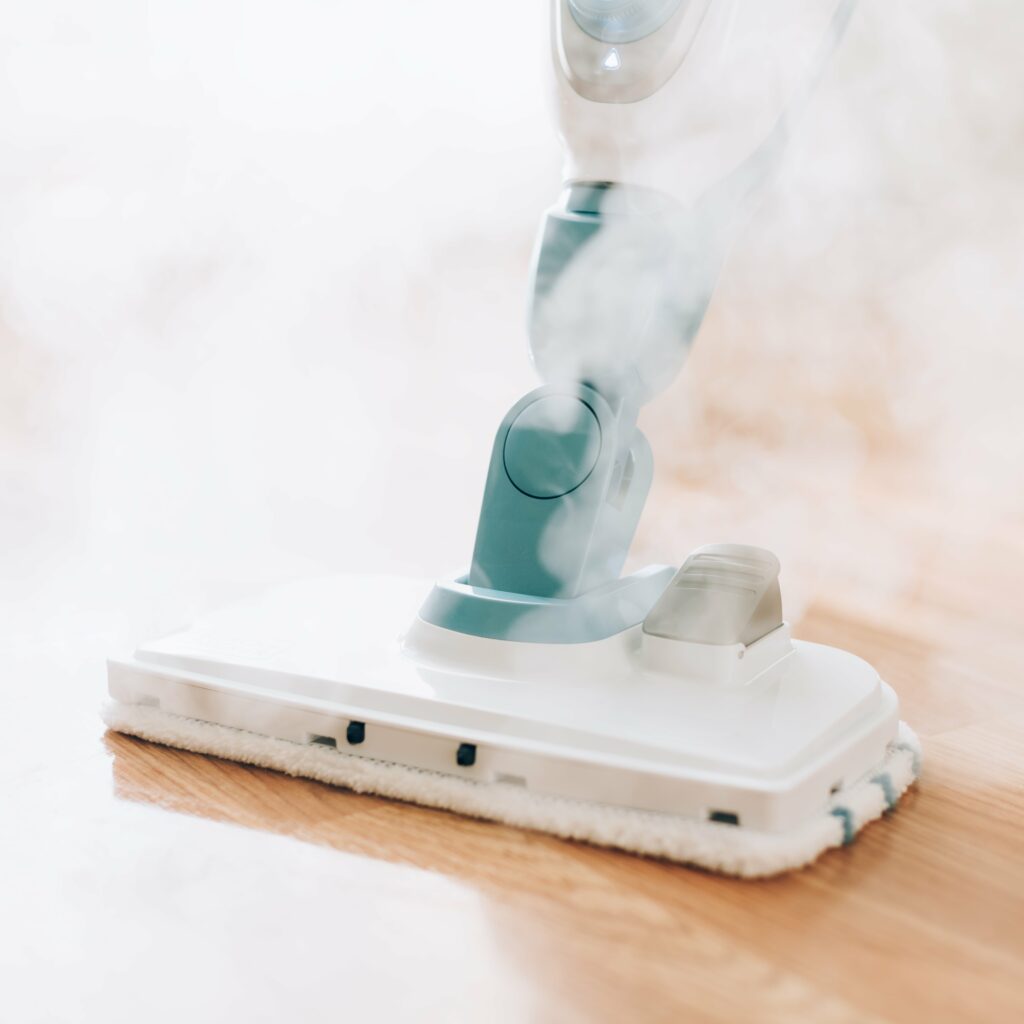
How steam treatment kills bed bugs and their eggs
When it comes to eradicating those pesky bed bugs, steam treatment has emerged as a highly effective method. The intense heat produced by steam is the secret behind its success. Bed bugs, including their eggs, cannot withstand high temperatures.
As you direct steam and hot water onto infested areas, the heat penetrates their exoskeletons, causing irreparable damage. The hot steam effectively dehydrates and kills both adult bed bugs and their unhatched eggs.
Safety precautions and recommended equipment for steam treatment
While steam treatment can be a powerful tool in combating bed bug infestations, it is crucial to exercise caution during the process. First and foremost, ensure that you read and follow the manufacturer’s instructions for your specific steamer model. This will help guarantee safety and optimal results.
Before starting the treatment, make sure to wear protective gear such as gloves and goggles to shield yourself from potential burns or injuries. Remember that steam can be extremely hot, so exercise caution when using it around delicate surfaces or materials that may be damaged by moisture.
In terms of equipment, a high-quality steamer with a minimum output temperature of 200°F (93°C) is recommended for effective bed bug extermination. Look for a steamer with adjustable settings to meet different needs throughout your home.
To ensure thorough treatment, use various attachments that come with your steamer to target different areas where bed bugs might be hiding. Concentrate on seams of mattresses or box springs, crevices in furniture legs or wall hangings, cracks in baseboards or floors—any place where these sneaky critters may have found refuge.
Remember that while steam treatment can be highly effective in killing all bed bug eggs and bugs, it may not reach every single bug or egg if the steam does not directly contact them. Thus, it is important to combine steam treatment with other methods for comprehensive bed bug control.
Encasements: Trapping Bed Bugs in Their Tracks
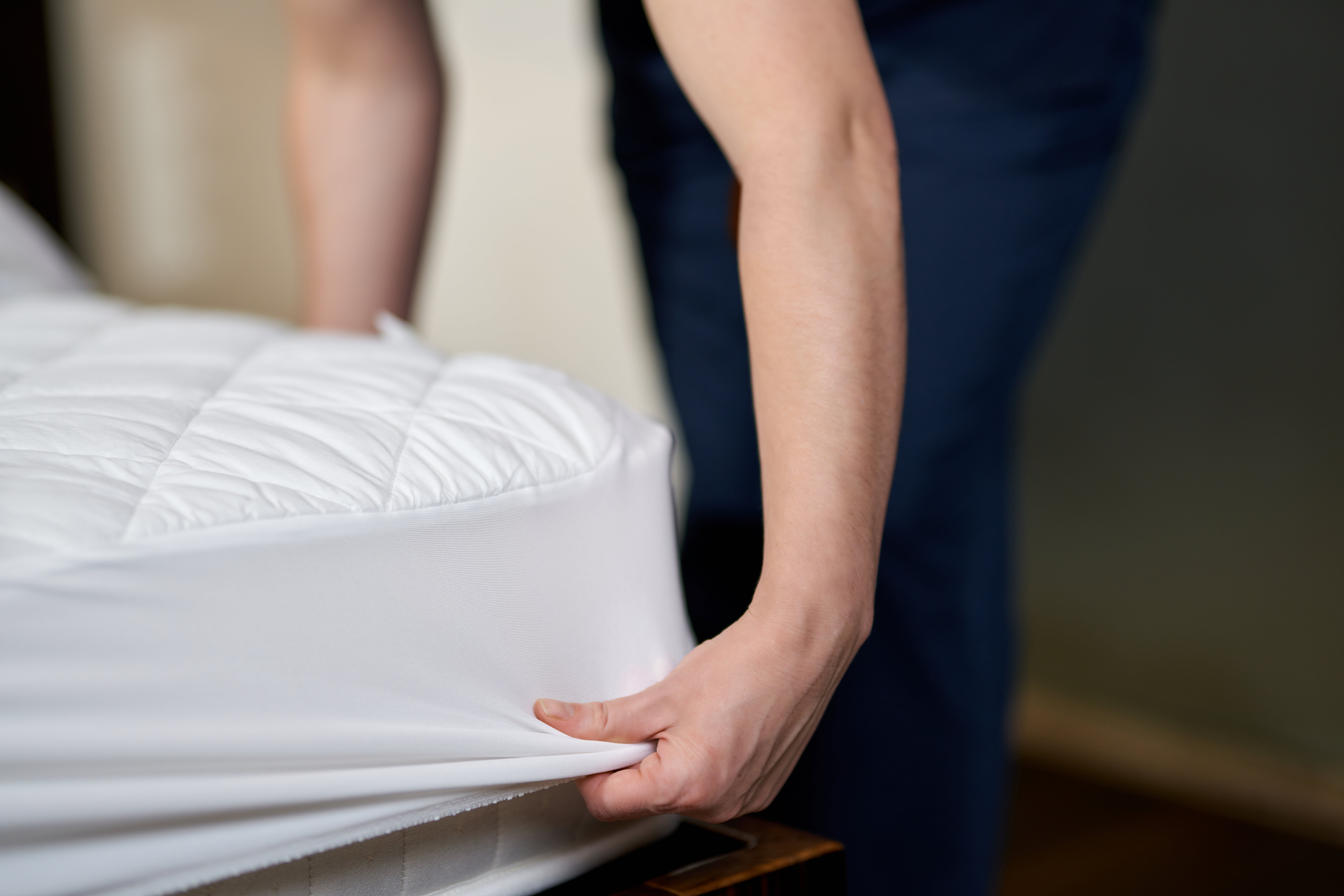
Explaining the use of mattress encasements as a preventive measure
When it comes to battling bed bugs, prevention is key. One effective method that has gained popularity is the use of mattress encasements. These specially designed covers act as a barrier, preventing bed bugs from infesting your mattress and making it difficult for existing ones to escape.
By enclosing your mattress in a high-quality encasement, you create an inhospitable environment for bed bugs, ultimately reducing their ability to multiply and eliminating their potential hiding spots. The primary purpose of mattress bed bug encasements, is to prevent bed bug infestation or contain an already infested mattress.
They provide a physical barrier that traps any bed bugs present inside the encasement, cutting off their access to food sources (i.e., you). This containment strategy is particularly useful in situations where your bedding may have come into contact with an infested room or if you are dealing with recurring bed bug problems.
Tips for selecting and installing encasements correctly
When selecting a mattress encasement, it’s crucial to choose one specifically designed for bed bug protection. Look for encasements labeled “bedbug-proof” or “bite-proof,” as they are typically made from tightly woven fabric that prevents even the smallest nymphs from passing through.
Proper installation of the encasement is equally important. Start by removing all bedding and ensuring your mattress is clean and dry.
Place the encasement over the entire mattress, ensuring a snug fit without any gaps or tears that may allow bed bugs to enter or escape. Secure the enclosure tightly using zippers or Velcro closures.
Remember that not only should your mattress be encased but also your box spring if you have one. Bed bugs can find harborages in both your mattress and box spring, so encasing both provides comprehensive protection.
Additionally, consider encasing your pillows as an extra precaution against bed bug activity. Regularly inspect your encasements for any signs of damage or wear.
If you notice any holes or tears, promptly repair or replace the encasement to maintain its effectiveness in preventing bed bug infestations. Mattress encasements are a valuable tool in preventing and controlling bed bugs.
They create a physical barrier that can trap existing bed bugs and prevent new ones from infesting your mattress. By selecting a high-quality encasement and installing it correctly, you can significantly reduce the risk of bed bug bites, minimize the chance of infestations spreading to other rooms, and ensure a good night’s sleep free from these pesky pests.
Remember that while encasements are an essential part of bed bug prevention, they should be used in conjunction with other proven methods such as regular cleaning, vacuuming, and monitoring for signs of bed bug activity. If you suspect a severe infestation or need assistance in eradicating these resilient pests, it’s always advisable to consult professional pest control companies who can provide expert guidance tailored to your specific situation.
Diatomaceous Earth: The Natural Insecticide
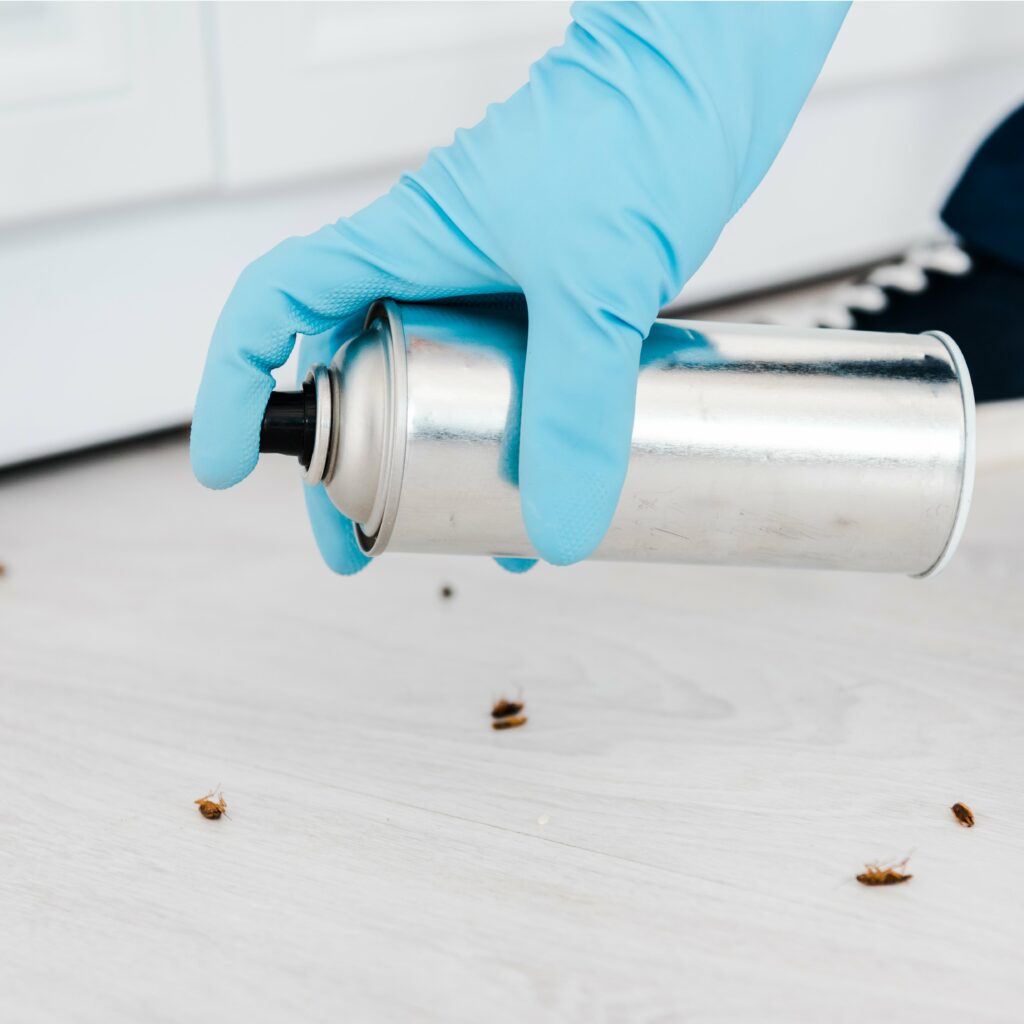
Abrasive, yet Gentle: How Diatomaceous Earth Affects Bed Bugs’ Exoskeletons
Diatomaceous earth, a fine powder composed of fossilized algae, may seem innocuous at first glance. However, when it comes to dealing with bed bugs, this natural insecticide proves to be a formidable opponent. The microscopic particles present in diatomaceous earth have tiny, sharp edges that can scratch the waxy exoskeleton of bed bugs upon contact.
This abrasion leads to dehydration and eventual death for these pests. Not only does diatomaceous earth affect adult bed bugs, but it also targets their eggs.
When applied properly and strategically around the infested areas, this natural insecticide can penetrate the microscopic pores on the eggs’ surface. As a result, it disrupts the delicate moisture balance within the eggshell and prevents proper development of nymphs.
Proper Application Techniques: Harnessing the Power of Diatomaceous Earth
To effectively harness diatomaceous earth’s potential against bed bugs, proper application techniques are crucial. Begin by thoroughly cleaning and vacuuming all affected areas to remove any debris or live bugs. Once clean and dry, lightly dust a thin layer of diatomaceous earth in cracks and crevices where bed bugs hide or travel.
When treating larger areas such as mattresses or box springs, use a brush to gently work the powder into seams and tufts where bed bugs often reside. Remember that excessive application may render it less effective as the fine particles need to come into direct contact with bed bugs for optimal results.
Additionally, take precautions when handling diatomaceous earth by wearing gloves and a mask to avoid inhaling excessive amounts of dust particles which may irritate your respiratory system. Keep in mind that while this natural insecticide is considered low in toxicity for humans and pets, it is essential to follow the manufacturer’s instructions for safe usage.
Precautions: Tackling Bed Bugs Safely and Efficiently
Although diatomaceous earth can be a valuable tool in your fight against bed bugs, it is important to recognize its limitations and consider it as part of a comprehensive approach. While it may effectively kill bed bugs that come into direct contact with the powder, it does not provide residual protection.
Bed bugs may still find hiding places outside treated areas, so combining the use of diatomaceous earth with other methods is advisable. Moreover, keep in mind that diatomaceous earth works best in dry environments.
If applied in areas prone to moisture or if exposed to water directly, its effectiveness diminishes significantly. Therefore, avoid using diatomaceous earth on damp surfaces or areas where liquid spills are likely.
Regular monitoring and reapplication are crucial to prevent bed bugs when using diatomaceous earth for bed bug control. Perform scheduled inspections to ensure that there is no re-infestation or missed areas during treatment.
By being vigilant and persistent, you can enhance the effectiveness of this natural insecticide. While diatomaceous earth offers a natural and relatively safe alternative for tackling bed bug infestations, understanding its mechanism of action and following proper application techniques are essential for success.
By utilizing this effective natural insecticide in conjunction with other proven methods like thorough cleaning, vacuuming, steaming, or professional pest control services if necessary — you can increase your chances of achieving a bed bug-free environment. So grab that trusty bottle of diatomaceous earth and take charge of your battle against these unwelcome guests!
Chemical Sprays: Effective but Handle with Care

Exploring various chemical sprays available for DIY use
When it comes to tackling bed bug infestations, chemical sprays are often considered a go-to solution. These sprays contain powerful insecticides specifically formulated to kill bed bugs and their eggs. However, it is crucial to exercise caution when using these products, as they can be harmful if not used properly.
One popular choice among DIY enthusiasts is the Bed Bug Spray X, known for its effectiveness in eliminating bed bugs on contact. Its active ingredient, pyrethroid, attacks the nervous system of these pests and disrupts their ability to survive.
Likewise, Sleep Tight Bed Bug Spray has gained popularity due to its residual effect, which continues killing bed bugs even after the initial application. Before choosing a chemical spray for your DIY bed bug treatment process, consider the severity of your infestation and the specific areas affected.
Select a spray that targets both adult bugs and their eggs for comprehensive eradication. Additionally, ensure that the product is registered by relevant regulatory authorities and follow all instructions provided on the label.
In this section, we will delve deeper into the precautions you should take when using chemical sprays for bed bug extermination at home. While effective in eliminating these pests, these sprays contain chemicals that can be harmful if mishandled or misapplied.
First and foremost, prioritize your safety by wearing protective gear such as gloves and a mask during application. Ensure proper ventilation in the area you are treating by opening windows or using fans to prevent inhaling excessive fumes from the spray.
Furthermore, remember that bed bugs tend to hide in cracks and crevices around your home. Target these areas with precise applications of spray rather than indiscriminately spraying all surfaces.
Focus on bed frames, mattress seams, baseboards, and any other potential hiding places. It is important to note that chemical sprays may not be suitable for every situation.
If you have a severe infestation or if your efforts with DIY treatments have been unsuccessful, it may be necessary to seek professional assistance from pest control companies. They have access to more potent chemicals and specialized equipment to tackle stubborn bed bug populations.
Conclusion
When used correctly, Chemical sprays can effectively combat bed bug infestations. Their targeted approach offers a practical solution for killing these persistent pests and preventing their resurgence.
However, it is crucial to handle these sprays with care and follow all instructions provided on the label. Remember, if DIY treatments prove ineffective or if your infestation worsens, do not hesitate to seek professional help.
With the right approach and persistence, you can successfully rid your home of bed bugs and restore peace of mind in your sanctuary. So don’t let these pesky creatures ruin your sleep – take action today!
Conquer bed bugs with D-Termination: Las Vegas’ top-tier pest control service!

Are you currently dealing with a bed bug problem in Las Vegas? D-Termination is here to provide assistance. Our team of experts specializes in eradicating bed bug infestations and restoring comfort to your living space. Bid farewell to bed bugs by selecting D-Termination for highly effective pest control today!
To book your bed bug control service and reclaim your space from these persistent pests, feel free to contact us at 702-919-6310 or visit dtermination.com.
Frequently Asked Questions:
While it’s possible to tackle a bed bug infestation on your own, professional assistance is often recommended for more effective and comprehensive results.
The most effective treatment against bed bugs depends on the specific situation, but a combination of methods, such as integrated pest management (IPM) techniques, including chemical treatments and non-chemical approaches, tend to yield the best outcomes.
While bed bug sprays can be a part of the treatment process, relying solely on sprays is generally insufficient to eliminate a bed bug infestation entirely. A multi-faceted approach is usually required.
Permanently getting rid of bed bugs in your house involves a thorough and persistent strategy that includes a combination of treatments, proper cleaning, regular inspections, and preventive measures to prevent reinfestation. Professional assistance may be necessary for long-term success.
If you found this article enjoyable, you might also find the following related content worth exploring:
The Fiery Conquerors: Demystifying the Art of Bed Bug Heat Treatment
Chilling the Infestation: Unraveling the Potential of Bed Bug Freezing

